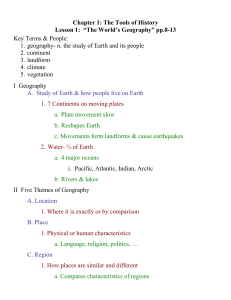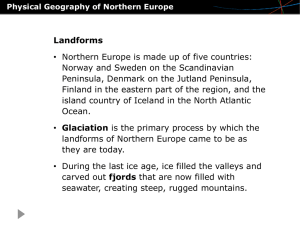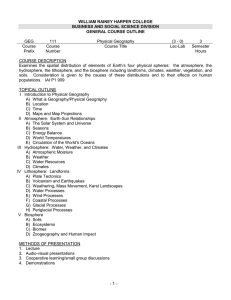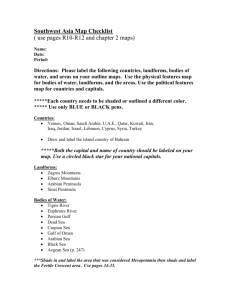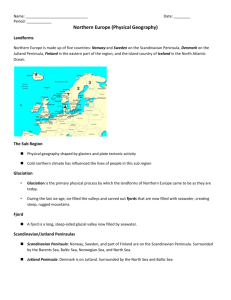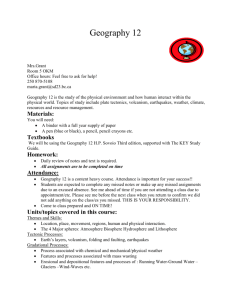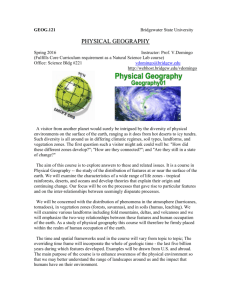Northern Europe Physical Geography: Landforms, Climate, Resources
advertisement
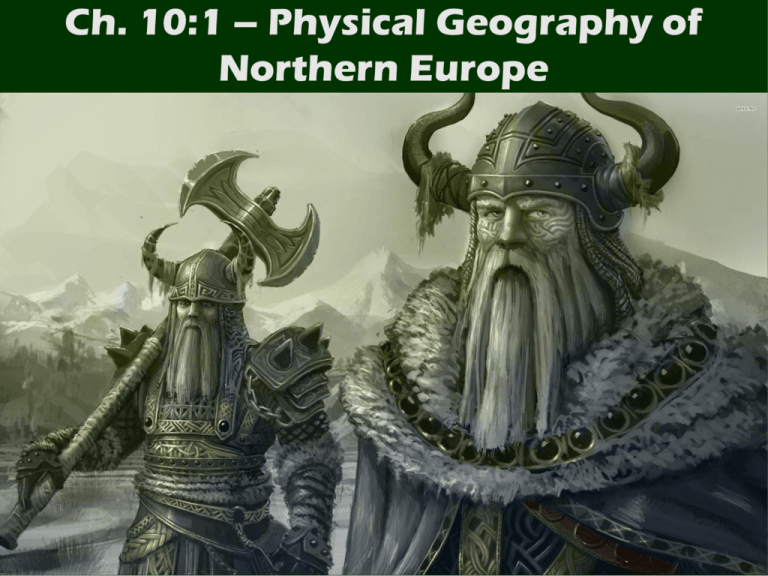
Ch. 10:1 – Physical Geography of Northern Europe Ch. 10 - Physical Geography of Northern Europe Landforms • Northern Europe is made up of five countries: Norway and Sweden on the Scandinavian Peninsula, Denmark on the Jutland Peninsula, Finland in the eastern part of the region, and the island country of Iceland in the North Atlantic Ocean. • Glaciation is the primary process by which the landforms of Northern Europe came to be as they are today. • During the last ice age, ice filled the valleys and carved out fjords that are now filled with seawater, creating steep, rugged mountains. Ch. 10 - Physical Geography of Northern Europe Water Systems • Glaciation left hundreds of thousands of lakes in Northern Europe. • Iceland’s rivers consist of glacial debris, making them cloudy. • Many of the rivers on the Scandinavian Peninsula contain falls and rapids that hamper transportation between cities. • The countries of Northern Europe harness the power of these falls and rapids to run hydroelectric power plants. Ch. 10 - Physical Geography of Northern Europe Climate, Biomes, and Resources • The climate patterns and biomes of Northern Europe are affected by latitude, landforms, wind patterns, ocean currents, and distance from water. • Natural vegetation varies from forests to tundra plants. • While the area has oil and natural gas resources, the countries of the region are leaders in developing renewable energy.
